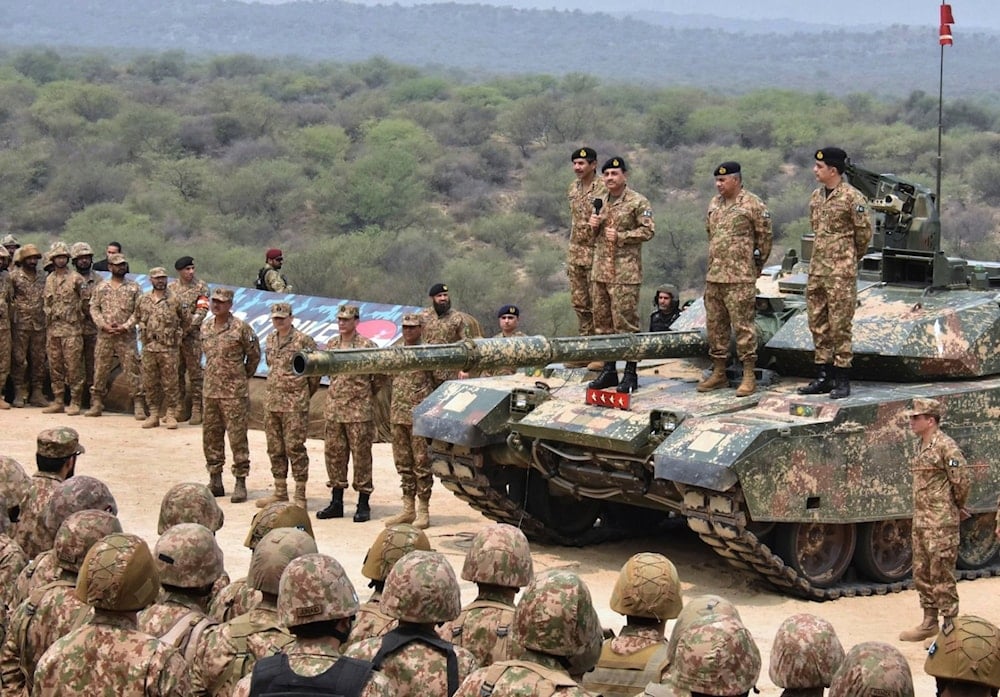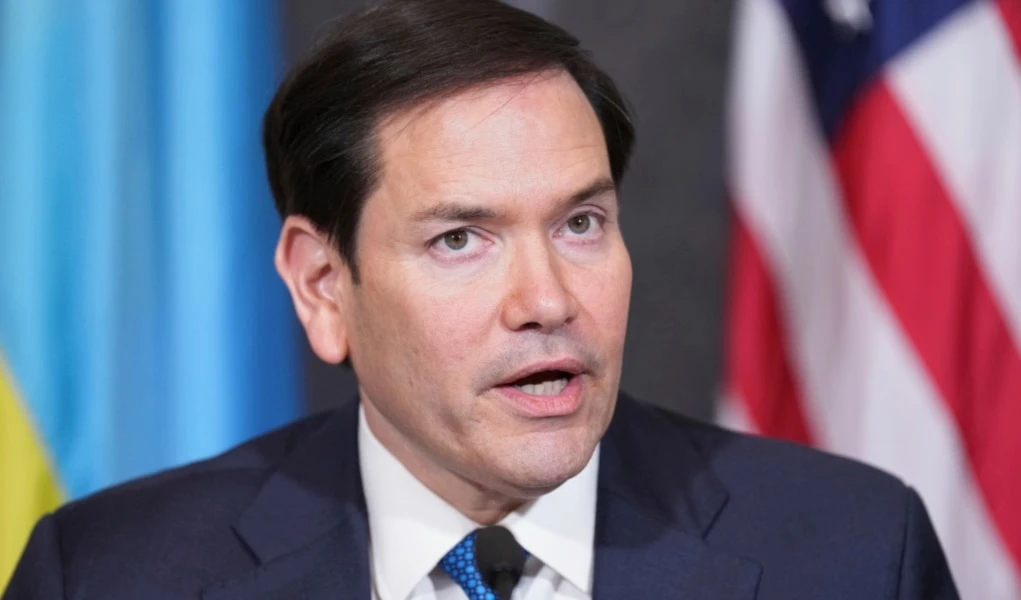India’s military arsenal vs. Pakistan’s first-use nuclear policy
India's military edge over Pakistan sharpens tensions after the Kashmir attack, raising fears of escalation between the two nuclear-armed neighbors.
-

Pakistan's Army Chief Asim Munir delivers a speech during his visit to witness military exercises in Tilla Field Firing Range, in the Jhelum district, Pakistan, Thursday, May 1, 2025 (AP)
As tensions rise between India and Pakistan following the deadly attack on tourists in Indian-occupied Kashmir last week, concerns mount over a possible military confrontation between the two nuclear-armed neighbors.
While a full-scale war is seen as unlikely due to terrain constraints and strategic considerations, both sides are signaling heightened readiness, according to Bloomberg.
Indian authorities face increasing domestic pressure to respond decisively to the violence, Bloomberg reported, with the April 22 assault marking the deadliest in the region in recent years, further straining fragile ties between New Delhi and Islamabad.
India vs. Pakistan: Military capabilities compared
India holds a significant advantage in conventional military strength. According to the International Institute for Strategic Studies, India has 1,475,000 active personnel, more than double the size of Pakistan's forces.
Its defense budget reached approximately $86 billion last year, ranking it among the top five military spenders globally and outpacing Pakistan’s spending by a factor of eight.
Despite this advantage, Kashmir's rugged terrain limits the scope for large-scale military operations.
All eyes on borders
India also remains focused on guarding its contested Himalayan border with China, while Pakistan prioritizes securing its western frontier with Afghanistan, where cross-border militancy remains a concern.
Both sides are investing heavily in surveillance and drone technology, with Pakistan’s military claiming this week to have downed an Indian spy drone near the Line of Control.
India’s challenge is compounded by the strategic alignment between China and Pakistan, as noted by Harsh Pant, vice president of the Observer Research Foundation in New Delhi.
Nuclear arsenals, strategic doctrines
Any direct conflict carries grave consequences due to the nuclear capabilities of both nations. India and Pakistan are each believed to possess approximately 170 nuclear warheads, according to the Arms Control Association.
India maintains a "no first use" doctrine and does not officially deploy tactical nuclear weapons. Pakistan, by contrast, has developed the Nasr (Hatf-9), a short-range ballistic missile with a 70-kilometer range, as part of its tactical arsenal and explicitly reserves the right to first use of nuclear weapons.
Both countries continue to develop land, air, and sea-based nuclear delivery systems. India holds an advantage in missile range, with the Agni-V capable of reaching 5,000 to 8,000 kilometers—far beyond Pakistan’s developmental Shaheen-3, which has an estimated range of 2,750 kilometers.
Global arms trade, shifting alliances
India and Pakistan are among the world’s leading arms importers, heavily reliant on foreign suppliers to maintain and expand their arsenals.
India, long dependent on Russia, has diversified its sources in recent years. Between 2009 and 2013, 76% of India's weapons came from Russia. By 2019–2023, that figure had dropped to 36%, with the US and France becoming key suppliers as New Delhi moves toward modernizing its military.
Pakistan, facing economic constraints, has leaned increasingly on China. Beijing provided 82% of Islamabad's weapons from 2019–2023, up from 51% a decade earlier, according to data from the Stockholm International Peace Research Institute.
In a December report, researcher Sardar Jahanzaib Ghalib from the Institute of Strategic Studies Islamabad noted that the widening conventional military gap has forced Pakistan to seek alternative strategies to counterbalance India’s growing capabilities.

 3 Min Read
3 Min Read










